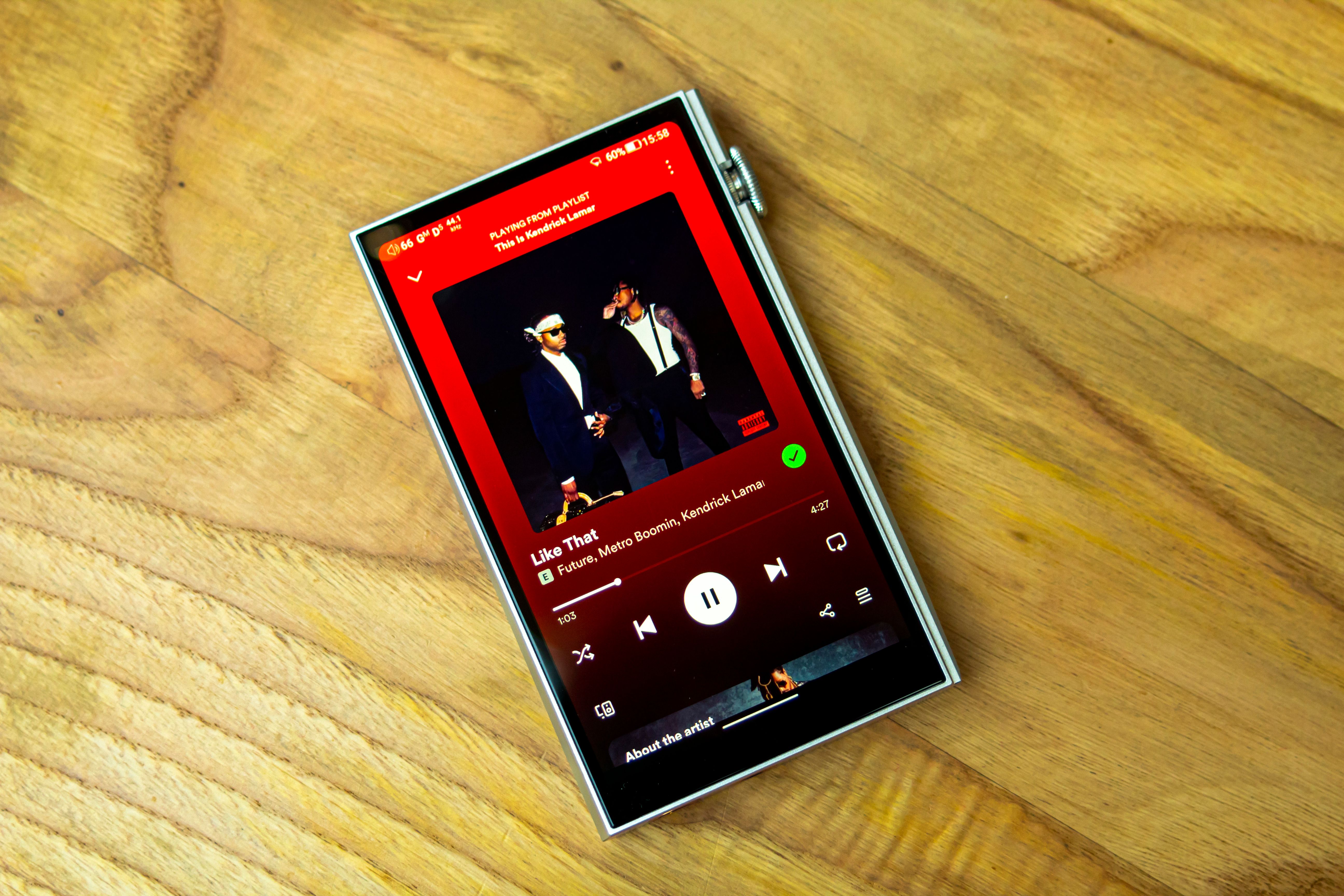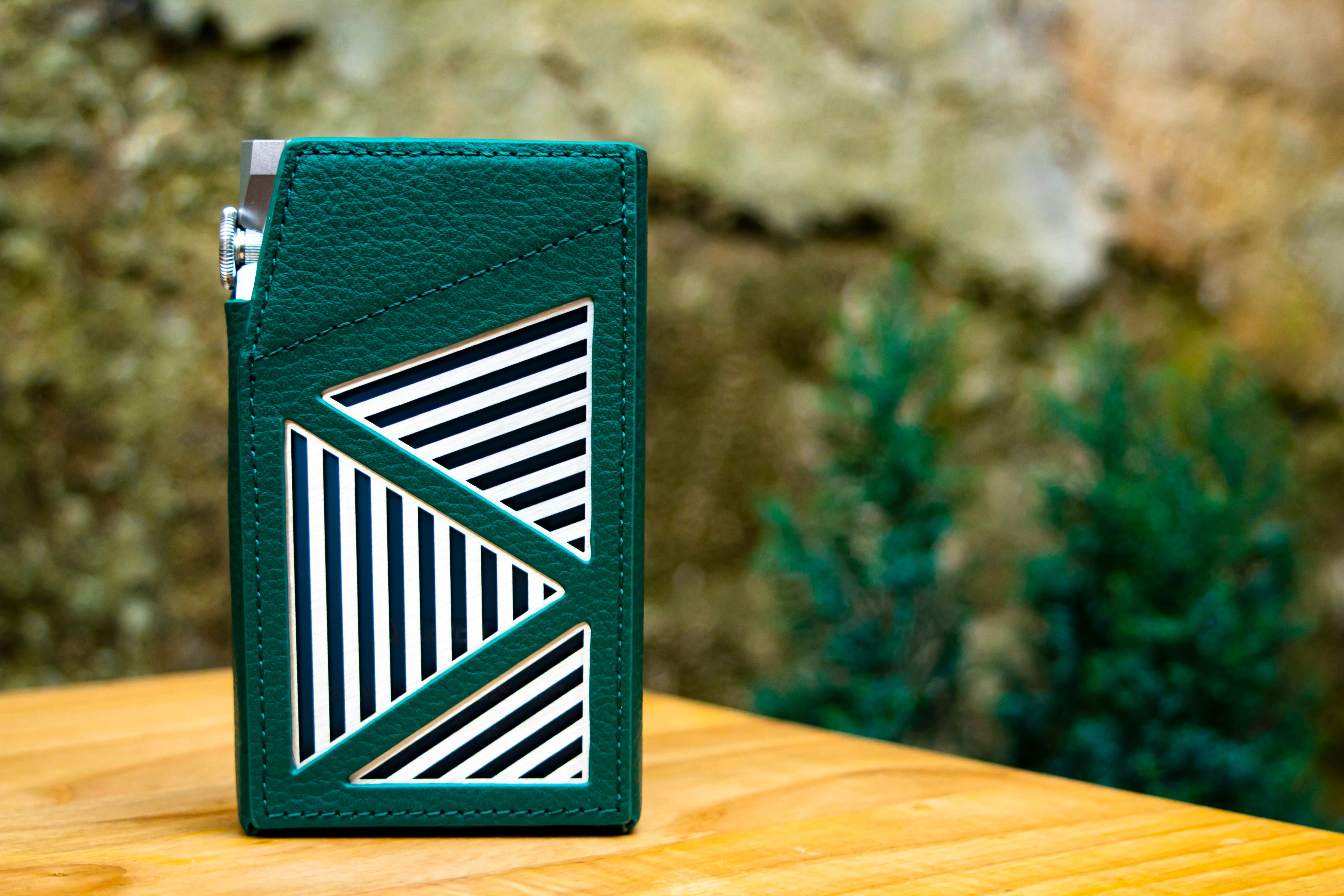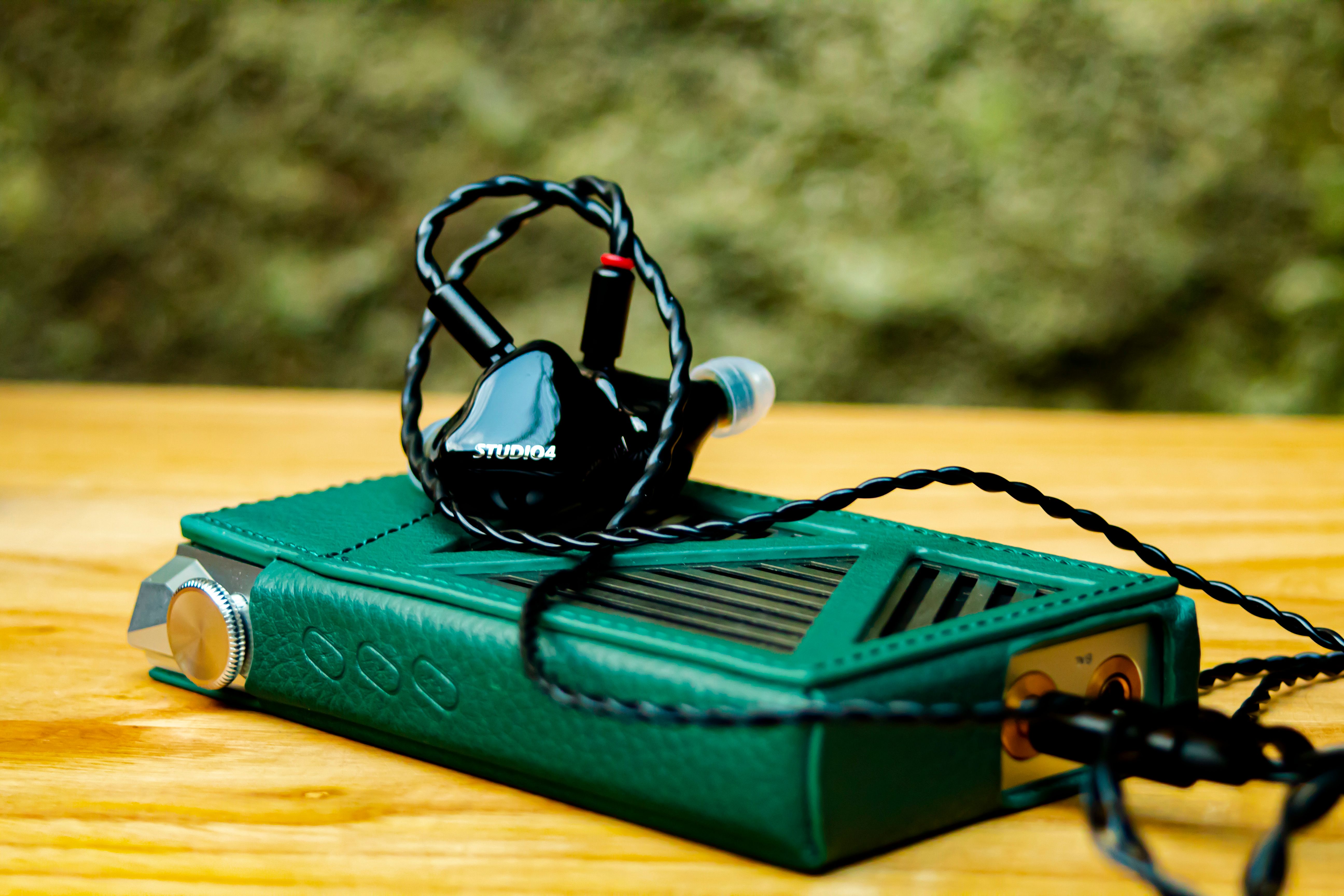DAPs
iBasso DX260
9.0
The DX260 is iBasso’s latest high-end portable DAP, delivering an exceptional experience that blends performance, design, and sound quality in a competitive market. Sound-wise, the DX260 excels with its balanced and neutral tonality, expansive soundstage, and detailed retrieval across all frequencies. We highly recommend, it's a top-tier DAP.
- Sound Quality
- 9.5
- Technicalities
- 9
- Soundstage
- 8.9
- Synergy
- 9
- Features
- 8.7
- Design
- 8.7
- Build Quality
- 9
PROS
- The Real Neutral Tuning
- Stellar Sound Quality
- Great Details Retrieval and Separation
- Wide and Holographic Soundstage
- Outstanding Separation and Imaging
- Replaceable and Good Battery Life
- Smooth OS without Lags
- Premium Build Quality
CONS
- Uncomfortable Sharp Corners
- No AMP Module Swapping
- Doesn't Come with a Leather Case
iBasso
iBasso has been expanding its lineup of DAPs and portable DAC/Amps with standout models like the DX180, DC07PRO, PB5, D16, and DC Elite. They also made waves in the IEM scene with popular, budget-friendly releases such as the IT04, AM05, and 3T-154. We previously reviewed the 3T-154 and were thoroughly impressed—check out the review here: iBasso 3T-154
Now, iBasso is returning to the DAP market with the innovative DX260. Priced at $949 USD, this DAP (Digital Audio Player) features an Octa DAC configuration, balanced headphone output, Qualcomm 660 SoC, and Hi-Res playback. The DX260 boasts an FPGA-Master 2.0 audio system controller and an 8x CS43198 Octa DAC chip matrix for exceptional sound quality, supporting high-resolution formats up to 32bit/768kHz PCM and DSD256. Let’s dive into what makes the DX260 a standout in its class.

TECHNICAL SPECIFICATIONS
Screen: Sharp 5.0" | 1080 x 1920
Audio Format Support: APE, FLAC, WAV, WMA, ACC, ALAC, AIFF, OGG, MP3, DFF, DSF, DXD, DST
USB: Type C (3.0)
Output Ports: 4.4mm balanced phone out, 3.5mm single-ended phone out, 4.4mm line out, 3.5mm line out, 3.5mm coaxial output, USB OTG output
WiFi: 802.11b/g/n/ac (2.4Ghz/5Ghz)
Bluetooth: v5.0 - SBC, AAC, aptX HD, LDAC
Receiver Codecs (DAC Mode): AAC, SBC
Memory: RAM: 4G / ROM: 64G
Battery: 4400mAh 3.8V li-polymer
Charge Time: 2.5 hours
Average Play Time: 14 hours
Size: 4.8" x 2.9" x 0.7"
Weight: 8 oz / 229g.
Warranty: iBasso 1-Year Product Warranty

DX260
The DX260 is powered by an octa-core Qualcomm 660 SoC, ensuring smooth and efficient performance. A standout feature of the DX260 is its unique removable back cover, which allows for easy battery replacement—a rarity among DAPs.

For audiophiles, the DX260 incorporates top-tier components, including the FPGA-Master 2.0 audio system controller paired with the Cirrus Logic 8x CS43198 Octa DAC. This setup is a first in the industry, as most other devices, such as the DX300, typically use only two or four of these DAC chips. The use of eight DAC chips significantly reduces distortion when converting digital files to analog signals, resulting in a higher-quality audio output that meets the demands of discerning audiophiles.

The FPGA-Master 2.0 algorithm in the DX260 takes full advantage of the DAC chips, constructing FiR filters that offer superior auditory precision compared to its predecessor. Users can select between two filter settings, 2x and 4x, or choose to disable the filter by switching to NOR mode. This flexibility, combined with five distinct digital filters (D1~5), empowers users to tailor their audio output, creating a unique and personalized listening experience.
DESIGN & BUILD QUALITY
The DX260 significantly departs from the company's previous design vision. The DX260 features a modern and industrial aesthetic, though its pointed and sharp edges may feel less comfortable in hand. However, this issue is mitigated when the device is placed in its carrying case. The chassis, crafted from CNC-machined aluminum alloy, is available in silver and black. The device is compact and lightweight at approximately 229g. The front of the iBasso DX260 features an impressive 5-inch in-cell capacitive touch screen with a crisp 1080 x 1920 resolution. Its vibrant colors and sharp clarity enhance the experience of browsing through your music library and appreciating album artwork.

The default included case is made of silicone, which feels quite cheap and is practical only for short-term use. After just 1-2 weeks, it tends to attract dust and make it less appealing. On the other hand, the optional leather case, priced at an additional $59, is a premium upgrade that significantly enhances the user experience. Not only does it offer a comfortable grip, but it also protects your hands from the DX260's sharp corner edges. This leather case provides a much-needed touch of elegance and functionality, making it a worthwhile investment for DX260 users.

PACKAGING & ACCESSORIES

- DX260 Player
- USB-C cable
- Coaxial cable
- TPU case
- Screen protector
- Warranty card
- Quick start guide
Ensuring comprehensive connectivity right out of the box, the package incorporates a USB-C to full-size USB Type-A adapter, providing versatility for various devices. Alongside this connectivity solution, the box encompasses a quick guide for swift setup and an after-sales booklet, which impressively caters to a multitude of languages. This inclusive approach not only enhances the user experience but also reflects a commitment to clear communication and support for a diverse user base.
BATTERY & POWER
The iBasso DX260 boasts a 4400mAh battery, supporting quick charging to reach full capacity in about 2.5 hours. iBasso claims an average playtime of 14 hours, but this is based on using the single-ended headphone output at low gain. If you switch to high gain and balanced headphone output, expect the battery life to drop to around 9 hours. Notably, the battery doesn’t drain when the DX260 is used as a USB DAC, though it doesn’t charge either, no matter how long it remains plugged in.
For optimal battery longevity, use low-impedance IEMs or headphones at medium volumes, and stick to MP3 or FLAC files. Hi-Res files, high gain settings, and extremely low or high impedance will deplete the battery faster. The device's performance and features make it a solid choice for audiophiles who value sound quality and versatility.

SOUND
The iBasso DX260 sets a new standard for balance and neutrality in portable audio players. Known for producing linear and neutral DAPs, iBasso has outdone itself with the DX260, which surpasses not only its lineup but also any other DAP on the market under the $1000 range. The clarity and resolution are exceptional, delivering an impressive level of detail that enhances the listening experience. One of the DX260's standout features is its expansive soundstage, providing a wide and deep audio presentation that immerses listeners in a holographic atmosphere. This makes it ideal for appreciating the nuances of jazz, blues, or acoustic music, offering a rich and captivating listening experience.
Renowned for their neutral timbre, iBasso's devices consistently avoid sounding cold or clinical. The DX260 exemplifies this, offering a reference-level response that retains an abundance of texture. It strikes a perfect balance, delivering precise, detailed sound while maintaining a warm and inviting sonic character. This makes the DX260 not just a technically impressive player but also an emotionally engaging one, ensuring a rich and textured listening experience.
Everything I paired up with the DX260 was different in good ways, more engaging and transparent. IEMs: Kinera Nanna 2.0 Pro, Softears Studio4, Softears RSV, Dunu SA6 MK2, Moondrop Blessing3, Oriveti OD200 and iBasso 3T-154. Headphones: Sennheiser HD 650, Focal clear MG, Sivga Luan, ThieAudio GHOST.

BASS
The DX260 offers superior depth and volume compared to most DAPs in its price range. It delivers a lush and deep sound, excelling at reproducing bass and low-end frequencies with both IEMs and headphones. The device brings out nuances and extends the low-end, maintaining a balanced, clean, and controlled performance without leaning too cold or warm. Its driving power is ample for most full-sized headphones.
In essence, the DX260 provides rich, full, and smooth bass. However, audiophiles seeking a particularly warm low-end might find the DX260 slightly more neutral than some bass-heavy DAPs. During our tests with bass-heavy genres like hip-hop, techno, and Drum & Bass, the DX260 impressed us with its engaging midrange and clean, airy treble. Vocals were naturally presented, creating an immersive listening experience.
MID
The DX260's midrange shines with a natural, clean, and open quality, offering vocals and instruments with exceptional precision and separation. To put it simply, the mids are smoothly neutral yet richly detailed. One standout feature of this DAP is its impressive coherence, which contributes to a beautifully balanced and realistic soundstage.
During our listening tests with the SA6 MK2, the DX260 delivered an incredibly natural timbre, enhancing both separation and detail. The result is an immersive audio experience where every element of the soundstage feels authentically presented and well-defined.

HIGH
The iBasso DX260 delivers lively and vibrant treble with impressive detail retrieval. Its well-extended high frequencies are smooth, resulting in a clean and non-fatiguing listening experience. The treble provides ample air and a touch of sparkle, creating a spacious and open soundscape. Acoustic music, in particular, benefits from this, with guitars exhibiting well-defined texture without sharpness.
When listening to jazz, the DX260 offers a vibrant and dynamic performance. Some listeners might find the sound a bit dry or less warm compared to other devices, but this is due to its accurate and neutral tuning, which is rare to find under $1000. Each song sounds as it was intended, maintaining the artist's original vision.
In summary, the DX260's treble is smooth, refined, and airy, with a natural timbre that enhances the overall listening experience. This makes it an excellent choice for audiophiles seeking an authentic and detailed sound.
SOUNDSTAGE & IMAGING
The DX260's separation and imaging capabilities are truly standout features, setting a new standard in its category. Having tested numerous high-end DAPs within and little beyond this price range, we haven't encountered another player that outperforms the DX260 in these aspects. Its ability to deliver precise instrument separation, along with a soundstage that matches the recording's intended depth and width, is exceptional. Remarkably, the DX260 maintains the original size of the soundstage, ensuring a consistently expansive and holographic audio experience.
With the DX260, songs reveal intricate layers with impressive separation, and synth effects project as if they’re emanating from a distant point, creating an expansive concert hall ambiance. The background vocals are distinct and well-separated from the foreground, enhancing the depth and clarity of the soundstage.

The bass performance is another standout feature of the DX260. It’s deeper and more solid compared to most sources, with top-notch quality that adapts to the specific needs of each track. For those who crave more bass, the built-in equalizer offers ample customization.
One of the most commendable aspects of the DX260 is its clean and dark background, providing a noise-free listening experience. The absolute silence, marked by a 0dB background, ensures that even the subtlest details in your music come through without any interference.
In essence, the DX260 transforms your listening experience, making it feel as if you’re in the front row of a concert, surrounded by crystal-clear sound and powerful, precise bass.
DX260 VS A&K SE300
The SE300 offers a smooth, natural tonality with an analog texture that adds a touch of warmth to the sound. Its soundstage is wide, though not overly so, creating an intimate listening experience as if you're just a few rows away from the stage. The smoother analog tonality results in natural layering and separation of sounds, with a balanced presentation that doesn't leave too much air between the layers.
The SE300 excels in delivering a balanced sound, with a notable presence in the bass and warmer mids. However, the DX260 stands out with even more impressive note extension and extra energy, particularly in the treble.
When it comes to soundstage, the DX260 is superior. It offers greater airiness and naturalness, a more spacious and holographic soundstage, and better depth and width. The DX260's technicalities are top-notch, setting it apart from the SE300.
In summary, the SE300 is a smoother and warmer DAP with impactful bass, while the DX260 shines with superior detail retrieval, technical prowess, and an expansive soundstage. Both are excellent DAPs with top-level sound, but the DX260 leads in terms of technical performance and soundstage.

CONCLUSION
The DX260 is iBasso’s latest high-end portable DAP, delivering an exceptional experience that blends performance, design, and sound quality in a competitive market. Powered by an octa-core Qualcomm 660 SoC, it ensures smooth and efficient operation. One of its standout features is the unique removable back cover, allowing for easy battery replacement—a practical touch rarely seen in DAPs. The DX260 also boasts an industry-first implementation of eight Cirrus Logic CS43198 DAC chips, managed by the FPGA-Master 2.0 audio system controller. This innovative setup provides audiophiles with unparalleled audio precision and quality, setting a new standard for portable digital audio players.
Sound-wise, the DX260 excels with its balanced and neutral tonality, expansive soundstage, and detailed retrieval across all frequencies. Its bass is deep and controlled, the midrange is clear and natural, and the treble is vibrant and smooth. These qualities make it ideal for various music genres, providing an immersive and emotionally engaging listening experience.
We highly recommend The DX260, it's a top-tier DAP that combines exceptional sound quality, innovative design, and practical features, making it a standout choice for discerning audiophiles under the $1000 range. Whether you're seeking technical excellence or an immersive listening experience, the DX260 delivers on all fronts.
